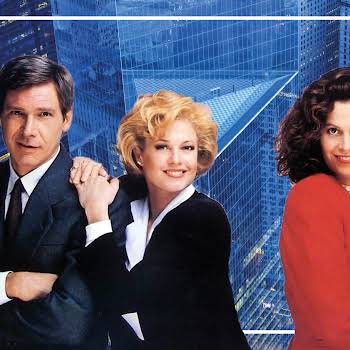
The traditional 9-5 working week is no longer fit for purpose and this is why
By IMAGE
17th Feb 2019
17th Feb 2019
The eight-hour working day was introduced more than a century ago to suit a manual labour work model. Today, as mental labour has become the norm, the traditional 9-5 working week is no longer fit for purpose, writes Laura Archer.
At the beginning of 2016, I had a run-in with my manager. I asked if I could leave the office half an hour early, at 4.30pm, as I had finished my work for the day. The answer came back that I was contracted to be at my desk from 9am-5pm so, no, it was not possible for me to leave early.
Perhaps spoiled by flexible hours in my previous job, my brain couldn’t quite compute what my manager was implying: that, even though she knew I had no work to do, the company was getting more out of me – or felt more secure – in insisting I sat inactive at my desk, rather than allowing me to manage my own time productively.
The scenario is not an uncommon one. Despite flexible working being at an all-time high, there are few people who can pull off requesting to work from home without apologetically shrinking into their shoulders – or quickly following up with a promise to come in early the next day. Presenteeism still very much exists. Ultimately, employers find it hard to trust their employees if they can’t see them: there’s a fear that, if we’re not at our desks, we’re costing the company money.
Stress and burnout
The sad thing is that this couldn’t be further from the truth. Stress, burnout, poor mental health and physical exhaustion are all dangerous outcomes of pressure to overwork, with 22 per cent of employees in Ireland experiencing stress at work “always” or “most of the time” – according to a survey on working conditions conducted by the European Agency for Safety and Health at Work. The proportion that “always” experienced stress was the third highest in Europe. The Irish Examiner recently reported that up to 11 million days are lost to stress-related absence in Ireland each year, costing the economy an estimated €1.5 billion annually.
In the UK, this figure was £26 billion, while it was as high as $300 billion in the US. Companies are losing money – not making it – by insisting employees stay at their desks all day, and in imposing exhausting workloads. This is further supported by a report published last year by the Organisation for Economic Co-operation and Development (OECD), which revealed that in Germany – Europe’s strongest economy – the average worker spends 1,363 hours a year at their desk, while in Ireland this figure is almost 500 hours greater, at a shocking average of 1,820 hours per year.
It’s time to admit that our current working hours aren’t working – and it’s for good reason that they’re not. The eight-hour working day is more than 125 years old – it was established as the result of a series of protests that occurred on May 1 across America and Europe towards the end of the 19th century, when factory workers rallied for their hours to be cut down under the banner “eight hours’ work, eight hours’ recreation, eight hours’ rest”. We now celebrate International Workers’ Day on this date every year.
But these hours were created for manual labour, not mental or creative labour, as the majority of us carry out today. We are not working in production lines, and in today’s “always on” culture, stepping away from our desk does not mean we are “downing tools”.
Everything and more
Peter Cosgrove, founder of the Future of Work Institute, is concerned by the fact that, in the modern workplace, “ There is little time given to thinking. If you look at your diary, what you have is everyone else’s time (meetings, calls, catch-ups). None of it is your time. All our own work seems to come after everyone else’s work. It’s like we say, ‘hit me with everything, and then I’ll do my work.’” is even extends beyond the once, now that work emails follow us around, pinging in our pockets.
Yet, as Cosgrove points out, our most creative thoughts rarely come to us in a noisy, distraction-heavy workplace, or while we are scrolling through emails. “Innovation works best when we have a rested brain.” Cosgrove resents the bravado many employees display at having worked through the night, or only having had four hours’ sleep – “the equivalent to coming into work having just had two tequila shots… If we want more ideas, we need people to be less tired. The biggest disease in the workplace is that of busy-ness. It’s as if it’s a negative to take time out to think.”
Four-day working week
So how can we gain more time for thinking, being or, simply, just resting? Several options are beginning to reveal themselves. The first is the four-day week, for five days’ pay, which a small group of companies have recently started trialling. In Glasgow, staff at Pursuit Marketing have worked a four-day week since 2016.
The company states that productivity increased initially by about 38 per cent, settling to about 30 per cent over the following year, with turnover rising from £2.2 million to £5 million.
“When our staff are in the office, they’re far more productive,” says operations director Lorraine Gray. “ They’re focused on what they need to do. And they want to enjoy that three-day weekend and not be worried about work.” Likewise, earlier this year, New Zealand-based rm Perpetual Guardian hit the headlines with reports of the “unmitigated success” of their trial of the four-day working week. Analysis revealed a “massive increase” in staff satisfaction, with no drop in productivity.
On other’s time
Alternatively, work-related technology use could be limited – as in France, where employees are restricted from logging on to their work email accounts out of hours – or by letting colleagues and clients know you only check your emails at certain times, and to call you at other times if it’s urgent. Conversely, good resting patterns could be rewarded, as American insurance company Aetna have decided to do, giving bonuses to staff who get 30 nights of good sleep in a row.
Finally, you could take matters into your own hands, as I decided to do when my manager insisted I sit sentinel at my desk between 9am-5pm. I went back to my contract and found that I was employed for 35 hours a week, not 40: I had five, 60-minute lunch breaks each week which, when added up over a year, totalled a frightening 260 hours, or seven working weeks (when divided by a 35-hour working week).
I made a point of reclaiming my lunch breaks for what they were – personal time – and found that, instantly, my mood, my energy, my diet, and most of all my productivity skyrocketed. My brain was ready to go when I returned to my desk and the afternoon slump disappeared. Taking time out does not equal laziness. If you want to get better results from your employees, give them a break.
Here is how to reclaim your lunch break:
Learn a language
Michel Thomas is my favourite audiobook series for learning languages – so simple, and just 20 minutes a day is enough to have you speaking la lingua franca in a few weeks.
Knit a scarf
I’d wanted to learn to knit since I was 16. Thanks to a YouTube tutorial for beginners, I’m now on my fifth scarf! Use chunky wool and 10mm needles to make it easier (and quicker).
Write a letter
The first thing I did with my reclaimed lunch break, and still my favourite. Choose some gorgeous paper, your favourite pen, and spend half an hour reflecting and constructing something beautiful to a friend or partner.
Go on a date
Thrilling, fun… and wonderfully efficient! Set up a 20-minute coffee with someone who works nearby (use the location setting on dating apps). A great way of getting that awkward first date out of the way and – if you hit it off – you can always make it a longer drink for the second.
Hit the pavement
Walk as far as you can for 30 minutes and then turn back – just going on a wander and exploring the area around your office space could reveal all sorts of surprises.
Laura Archer is the author of Gone for Lunch: 52 Things to Do in Your Lunch Break (Quadrille, €11, out now), goneforlunch.com.
This article was originally published in the January/February issue of IMAGE magazine























